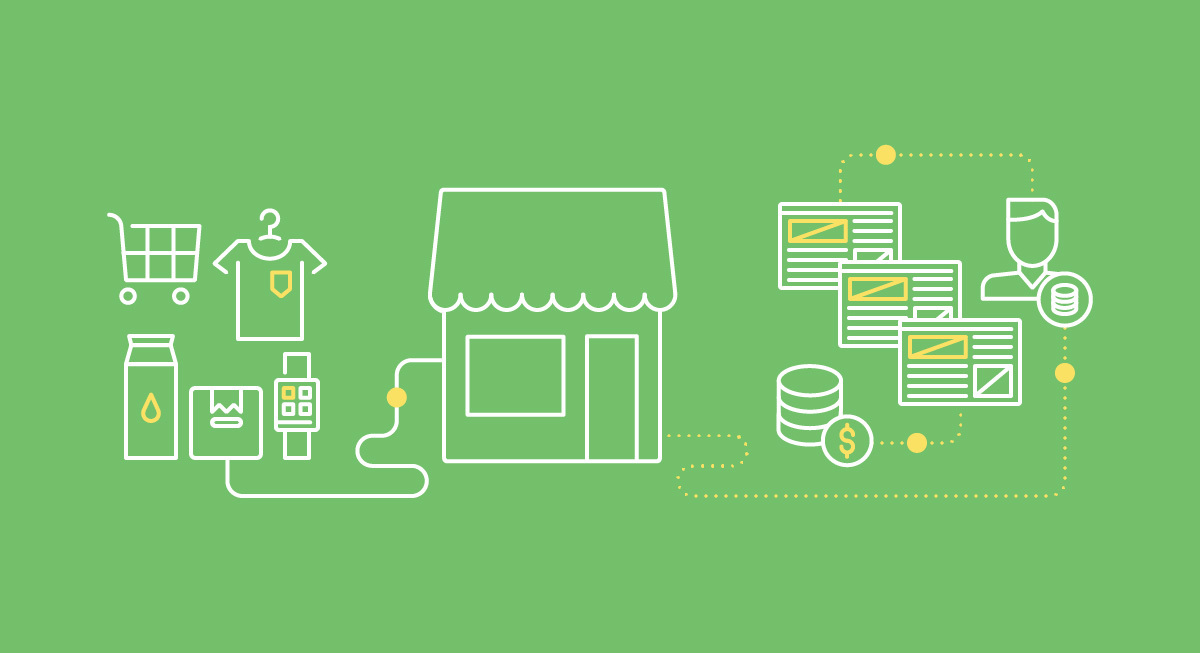The story of bricks-and-mortar retailers trying to stay competitive with Amazon feels like a tale as old as time. But the story has evolved in recent years. It’s no longer just a story of competing with Amazon’s formidable product selection, pricing and delivery network.
Make no mistake, those things are all still something retailers need to compete against, through for example first-party data marketing. But there’s a new opportunity that retailers need to think about: The revenue streams made possible by using first-party data to generate advertising revenue.
Many retailers are leaving money on the table by not monetising assets that they already have, losing out on ad revenue with margins far in excess of the retail business. This is playing directly into Amazon’s hands.
Why is first-party data advertising revenue such a big deal?
In 2019, Amazon reported ad revenue of roughly $14.1 billion, including $4.8 billion for the fourth quarter – a 41% year-on-year increase.1
That’s a phenomenal amount of revenue coming in that isn’t directly associated with retail sales. And it’s all revenue that Amazon will be able to reinvest into the retail arm of the business allowing them to offer low prices and great customer service, which of course does drive retail sales growth.
The good news is that many retailers are already in a position to open up this new revenue stream as well. The loyalty schemes that many retailers run put them in a position where they are sitting on a mine of valuable data.
And because the customer has provided the data themselves, entering into a loyalty scheme with a clear value exchange, the data is accurate and its usage is transparent to the customer. Indeed, that transparent value exchange arguably puts retailers in a better position than Amazon where the value exchange is implicit, especially for Prime subscribers who are paying an explicit fee for Amazon’s services.
This also raises an obvious question: if the data already exists to create a high margin ad business like Amazon’s, why aren’t retailers creating an equivalent business? Increasingly the investors in and the leadership teams at retailers will be asking this question.
Opening up new data driven advertising revenue models.
It’s more than likely that any retailer with a loyalty scheme is leveraging that data in the form of shopper marketing with CPGs. Tactics such as in store promotions for “15% off your favourite brand of toothpaste for this month”, or “Buy-one-get-one-free on this brand’s crisps”.
But there’s a difference between that and the type of marketing (and revenue) possible when data is monetised across new channels and new campaign types, as described below:
- New channels
As valuable as the data attached to a loyalty card (purchasing information, email and postal address, as well as potentially age and gender) is, it’s natively still limited in the channels it enables contact with.Customers can basically only be contacted in store or via email/direct mail, which means it’s shopper marketing or it’s nothing. However, that first-party data can be mapped into digital and addressable TV. Once that happens it opens up the possibility of providing CPG brands with targeted advertising and marketing solutions across all channels and devices; this brings scale as users can be reached across mediums. - New budgets
A retailer leveraging its data beyond shopper marketing means that CPGs can use audiences to reach customers with brand building marketing messages. Marketing that isn’t about a promotion or a price point at the specific retailer, but about the brand itself. It’s higher altitude, and it’s far more valuable for brands.CPGs have different budgets for shopper marketing and brand building marketing. And the budget for the latter is significantly larger. So the same data suddenly multiplies in value for retailers.
Now, for some retailers enabling this type of marketing with their data may seem counterintuitive. If it’s a channel they don’t control, and the marketing isn’t pointing directly back to them, aren’t they selling away their customers?
Well, not in our experience. The customers being served with ads are from the loyal pool of that retailer, so any new brand interaction will most likely happen through that retailer.
So retailers actually end up benefiting from media reaching their regular customers, without it eating into their budgets. This means more media spend that can go to reaching new customers (who may be shopping with Amazon instead!)
New business, made simple.
It may seem that setting up a new branch of the business to create this new advertising revenue stream is too daunting a task. It needn’t be.
By using a data collaboration platform like LiveRamp Safe Haven, you’ll be able to outsource the hard work of providing data access to CPGs as well as ensuring compliance and pseudonymisation of personal data. So you’ll need relatively low investment (whether time, manpower, or finances) in order to get this new revenue stream flowing in.
And because the Safe Haven platform is built with Privacy by Design principles such as full permission controls over what data is accessed by who, for how long and for what purpose, you can be sure that monetising your data doesn’t come at the expense of customer trust.
Staying competitive with Amazon isn’t just about being a great retailer any more. It’s about making the most of the commodities at your disposal.
If you’re ready to unlock the value of your first-party data by breaking out an ad business, get in touch today.
1. https://marketingland.com/amazons-booming-ad-business-grew-by-40-in-2019-275312
